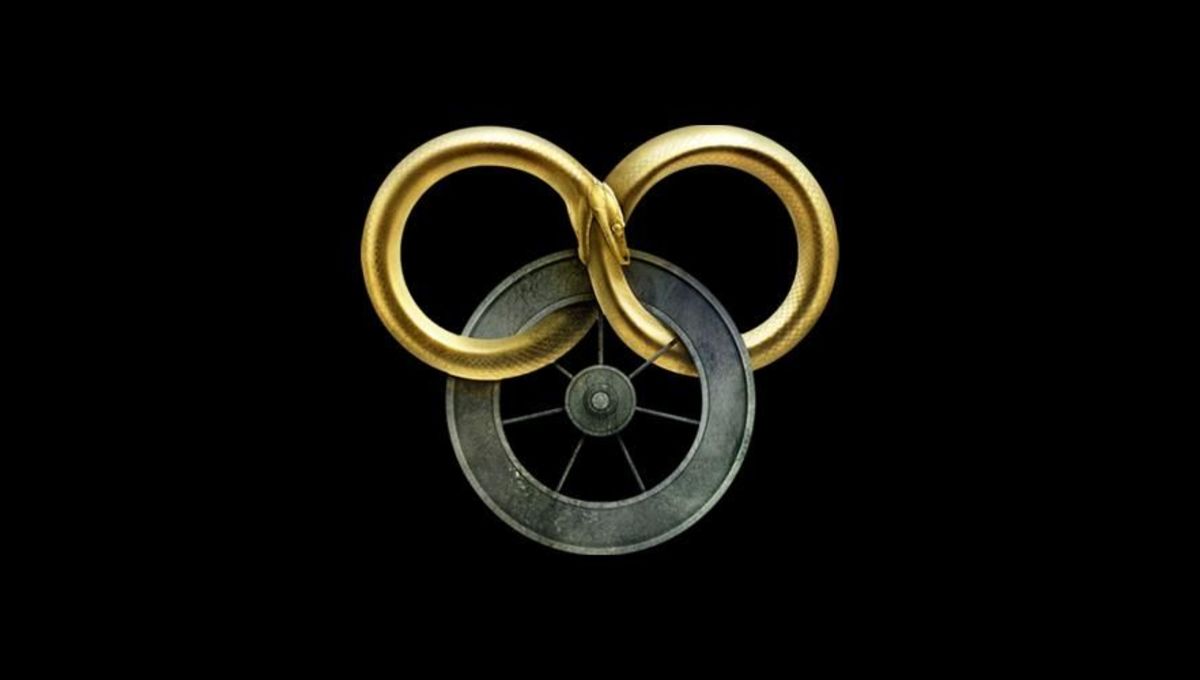Now listen, a giant bird would still be hella intimidating. Even a smol bird, when angered, can and will draw blood
Birds are tiny knife airplanes.
No, they are the government’s drones !birdsarentreal@lemmy.world
See: goose
See, also: swan
some people just havent been chased by a chicken, duck or anything similar, so they think dinosaurs having feathers would make them less scary
My chicken has declared that she is a t-rex, and all robins and squirrels must respect her authoritah.
It’s fucking hilarious to watch, but then you realize that she really is a giant, angry predator to anything the size of a robin. Imagine a chicken that’s about thirty feet tall, with claws the size of a small sword and a wingspan that is big enough to look like a wall. And it’s charging at you, making noises like an angry teakettle, its beak sharp and hard, while its eyes drill into you so that you know feathered death is inescapable
That’s why I always compliment the sparrows.
There never was any evidence they were scavengers and numerous fossil examples that T. Rex did infact hunt large herbivores for food. The most notable being a T. Rex’s tooth found in a hadrosaur’s spine, and the wound showed signs of healing meaning the hadrosaur was alive when it was bit and survived the encounter.
>“We not only have a broken-off tooth embedded in the bone of another animal, but the bone has healed over the wound, and a nasty wound it was too,” said David Burnham at Palm Beach Museum of Natural History in Florida. https://www.theguardian.com/science/2013/jul/15/t-rex-tooth-embedded-prey-dinosaur
Other evidence includes fossilized footprints suggesting a group of T. Rex of differing ages stalking their prey. This isn’t to say the T. Rex wouldn’t take advantage of a dead animal and opportunistically scavenge, as any large predator will today, but this probably wasn’t their primary means of getting food.
and also there is no evidence of feathers, but it is very probable they had some, like just small filaments on top of their heads and necks or something similar. There are some Trex skin impressions, but theyre all on parts where there wouldnt be feathers anyway
That’s all very interesting, but I can’t get past the socks with sandals. T-Rex is dead to me.
Don’t try to convince me that a 12 meters long, 8 tons heavy cassowary with mouth full of >20 cm long teeth and eyes that have better visual acuity than hawks or eagles, being able to see you from 6 km away, while also having excellent sense of smell, is not scary.
Fluffy or not, I wouldn’t want to be closer than about 10 km to a hungry Tyrannosaurus.
If it’s any consolation trex was an animal accustomed to hunting truck sized triceratops, eating you would be like eating a single potato chip; very unsatisfying.
Right? I’m sufficiently leery around chickens.
How do we know anything about their visual acuity or sense of smell?
It’s amazing how much you can infer from the shape and size of the various features of a bone.
For eyesight, simple physics: bigger is better. That’s why we build huge telescopes, they collect more light and have better angular resolution than small ones, and the same goes for eyes. In addition, birds in general have very good eyesight and dinos are very closely related to birds. For T. rex, they also have narrow snouts allowing for excellent binocular vision.
Smell is similar—big nasal cavities allow for big olfactory organs, meaning a lot of receptors that can bind with airborne molecules.
That really is amazing. But why did we previously think that the T-Rex’s eyesight was terrible, then (as seen in the first Jurassic Park movie)?
The JP movie (and book, too) took a lot of artistic license. Which is understandable; if the T. rex was depicted as having realistic senses, it would have been a quite short movie with a grizzly ending. And realistic velociraptors wouldn’t have been as intimidating—they’s been small and quite dumb.
What I really wish is that they’d done the vocalisations of T. rex more realistic—the high pitched screaming was not right. Imagine if the first sign of the rex wasn’t ripples in the water glass but the barely perceptible sub-20 Hz vocalisations from the distance that grow loud and nauseating as it gets close. Granted, not many sound systems could reproduce it—mine can and it’s glorious.
Just curious, since most postpone can only hear from 20-20k Hz or something and since most sound systems don’t go lower, what kind of media to you listen to that actually go that low? Why would anyone record it if only you and a few other audiophiles can reproduce it?
Our hearing has no hard limit in low frequencies–sensitivity falls off at the extreme, but it doesn’t mean you can’t hear sounds below 20Hz. That 20 Hz limit is often quoted simply because the tests that were done in the past didn’t measure lower. In reality, most people can hear 15 Hz and lower, just the threshold of hearing goes up. That’s ignoring tactile effects of these frequencies, which adds a whole new dimension of sensing ULF.
Many movies have a crapton of LFE below 20Hz (for example Blackhawk Down has a scene with single-digit ULF effects), though you generally get it only on blu-ray or DVD releases, streaming services tend to have a neutered sound mix. Today’s subwoofer tech has advanced to a point that even commercially available subwoofers can do 20 Hz and lower; bespoke sealed cab systems with 8 or more 18" or 21" drivers and a dozen kW of amplification can do single digits at 120+ dB in-room. Head over to avsforum.com for discussion and home cinema system show-offs :)
Why would anyone put these frequencies on a record? Well, sound designers and mixers tend to have very good sound systems, both at work and at home, and are generally very passionate about their work. Same thing as guitarists are very picky about their instruments and pedals, while the average concertgoer or radio listener couldn’t make out any difference between a 500€ and a 10000€ guitar, never mind different pickups and overdrive pedals.
We can infer a lot from the size and position of its eye sockets. The eyes were position so as to be forward facing, not side facing like an herbivores.
This article has a really good pocture in it showing you a direct view of the eye sockets from the snout. Its cheekbones and nostrils are designed so that it’s visual field easily would clear them, giving it binocular vision like ours. The study that article discusses used fossils to model what dinosaur faces would have looked like, then examined their visual field. The trex had around a 55 degree binocular range, which is larger than many predatory birds that we know to have excellent vision over long distances. It’s eyes were also gigantic, allowing for a lot of light to get in.
As for sense of smell, I don’t know how we know about it; I think we assume it did because it’s nostrils were also huge, and because most animals today have good senses of smell, meaning it’s a good adaptation to have and likely would be present on the largest land predator to ever exist.
It seems like a lot of guesswork based on a small amount of evidence.
Because of being extremrly large and nonflying I don’t see why a trex would gain an advantage by being able to a see a mouse from kilometers away like a modern bird if prey. Between that the millions of years of evolution between them, I wonder if their eyes were less developed in some way.
Given that we have a lot of evidence that trex would swim to islands in the middle of north America to hunt (there was an inland sea here 66 million years ago), I think them having very good long distance vision actually makes a lot of sense. If they were hunting across flat crasslands and looking for food on islands across stretches of water then it would make a lot of sense that they need such good vision.
They don’t need to see a mouse from kilometers away, they need to see if that big Grey blob on the Shor of the island 2km across a strait is a washed up icthyosaur, or a triceratops, or just a rock.
Gen alpha is trying to get everyone to wear socks with sandals
As a millennial, it will always be a no. It will forever have a Middle Aged Maths Teacher on Holiday vibe to it for me.
Meh, middle aged math’s teacher sounding like a solid reliable job right now. Nothing to shy from.
Also, I’ve put on some Birkenstocks with wool socks before. I feel no shame for it. It’s comfy.
Definitely not gatekeeping other folks wearing them, I just couldn’t without my grade 9 maths teacher popping into my head.
No worries, I was just playing along. :P But I have embraced the unfashionableness.
I think gen alpha has become increasingly aware of foot fetishes so they avoid showing their feet. I have a 15 year old and she never wears open toe shoes in public.
I very much agree that it’s related to the recent extreme sexualization of feet
I don’t get it… Feet are gross.
For some that is also an extra fetish on top
Nah, they’re just there
well gen alpha are babies, 15 year olds are gen z
but also yeah society is getting more puritan and it’s bad
Well that explains why Quentin wants to retire after his next film.
deleted by creator
would have to start with socks that are split between the big toe and the index? toe, like a ninja, for starters… but even then still not comfortable or safe. might as well wear crocs or slippers.
I typically hand grown adults wearing crocs a card with the suicide hotline number on it because it clearly a desperate cry for help.
I think most sandals don’t have a divider between the big toe and the rest. I think of sandals as any casual, open-toed shoes.
Honestly they look way cooler with feathers. Older models of how dinosaurs looked were so bland by comparison.
There’s that one drawing of a medium-sized raptor that basically looks like a sparrow and to date that’s the coolest depiction of a dinosaur i have seen.
IT LOOKS SO REAL
edit: found it: https://i.pinimg.com/originals/8f/6a/76/8f6a764e115095a9b7a0c236fac542e2.png
Also if you spend time with chickens, you realize without a doubt that birds = dinosaurs. Especially if you raise them from chicks, their awkward teenage stage is like half bird, half lizard anyway.
Scientists: no evidence that dinosaurs did not have pubes
not sure if it counts, but there are some fossils that show exactly how dinosaurs sat, and im pretty sure there was nothing resembling pubes on the butt part
They probably shaved
deleted by creator
That’s why they died out.
Everyone knows socks ‘n’ crocs are superior
Their tail scales looked like the Monster logo.
So is the t Rex getting cancelled or what?
they wore socks with crocs???















